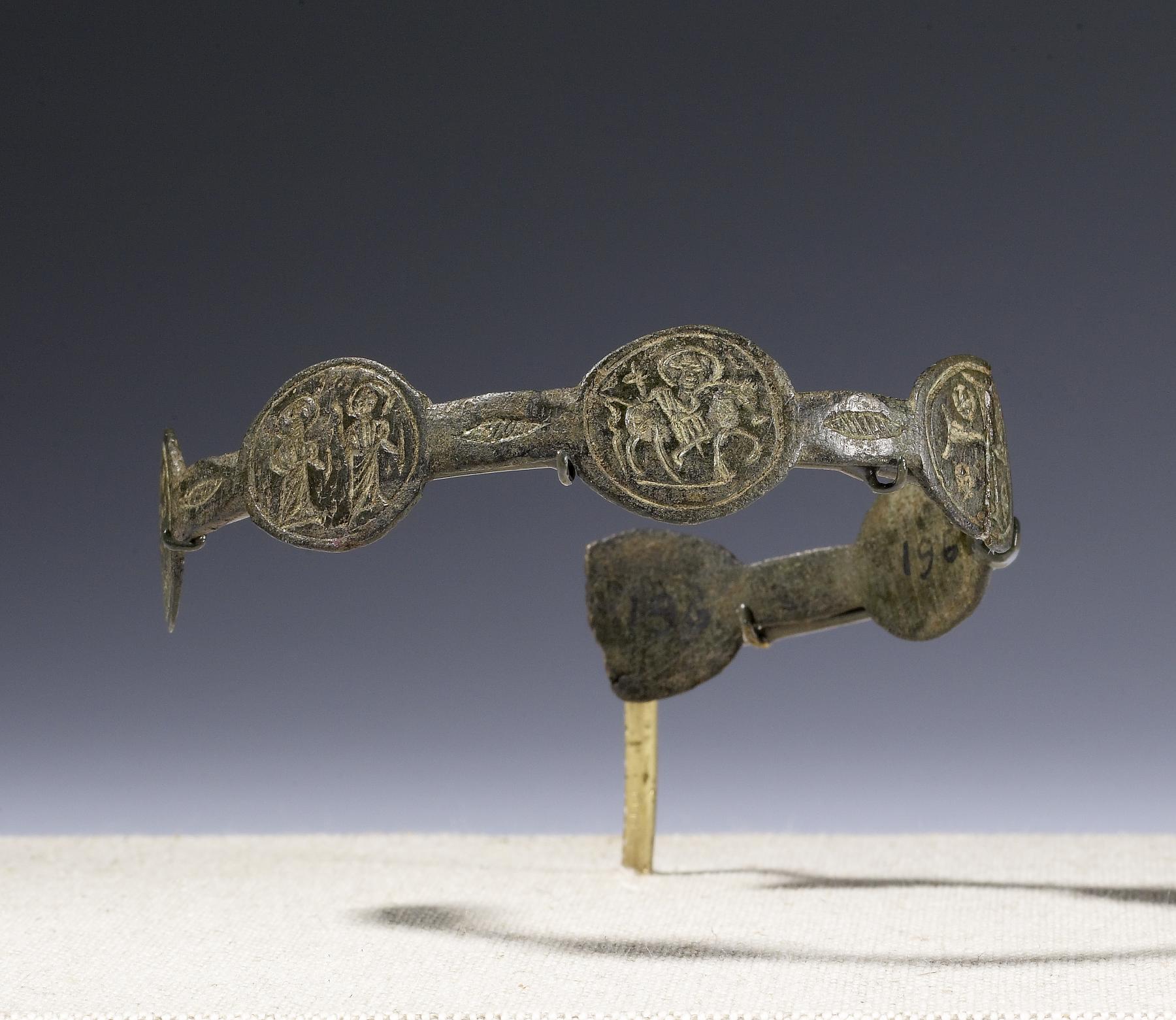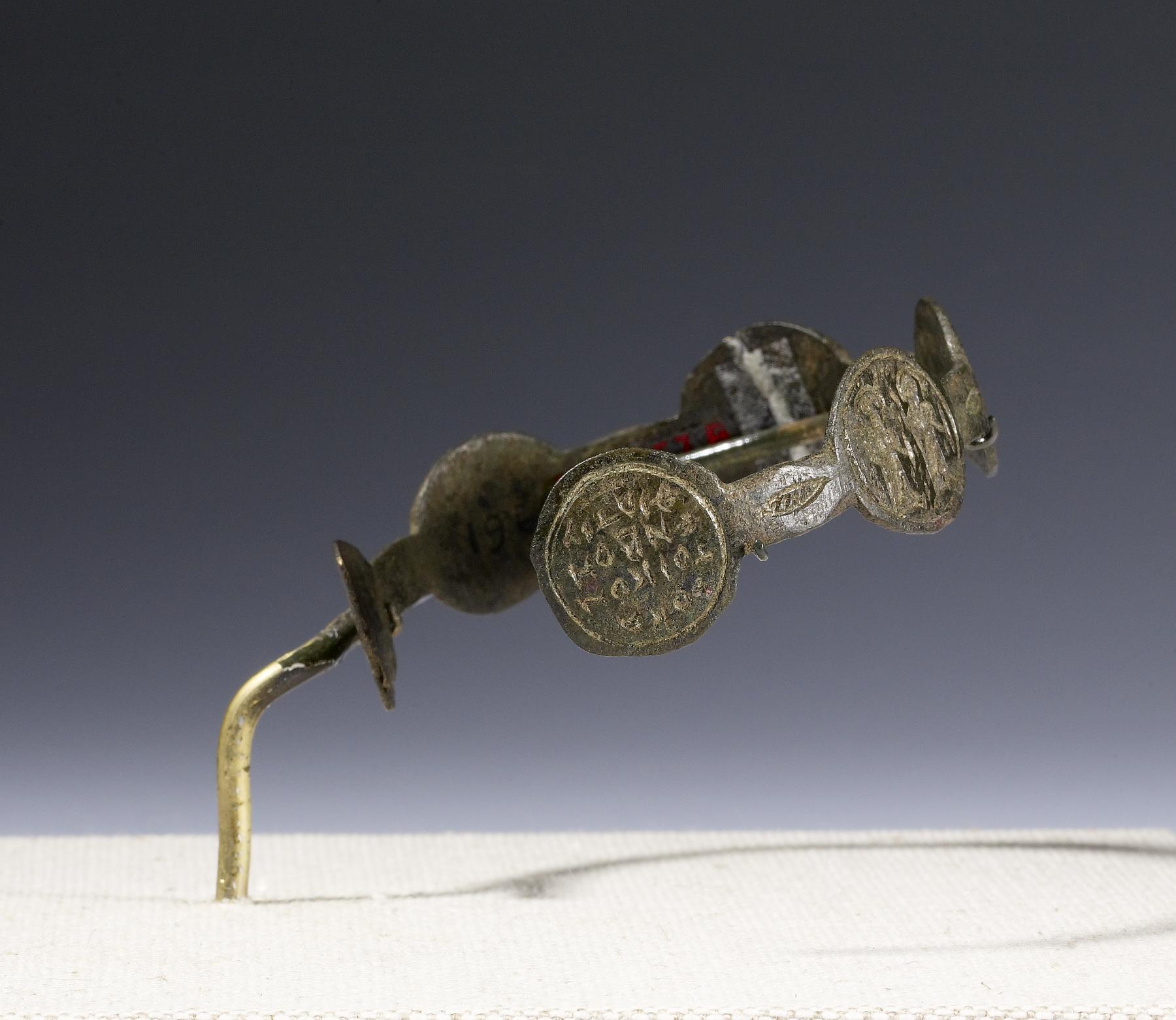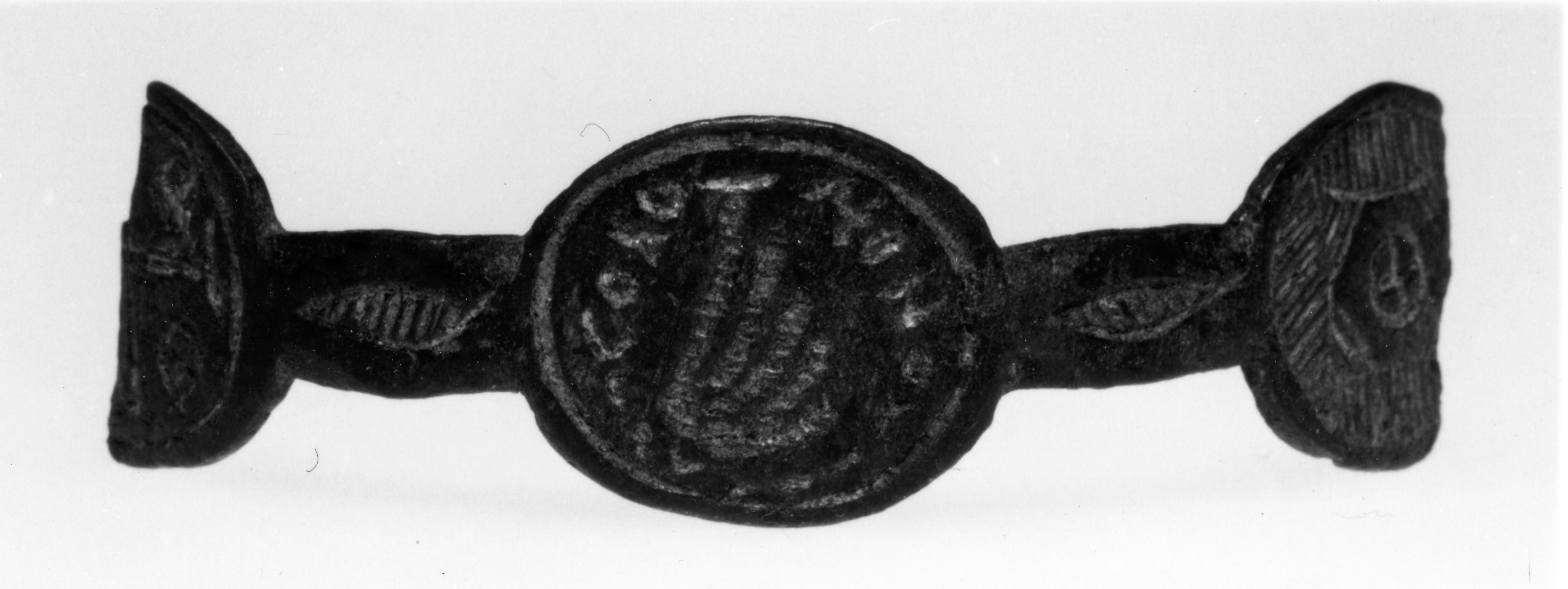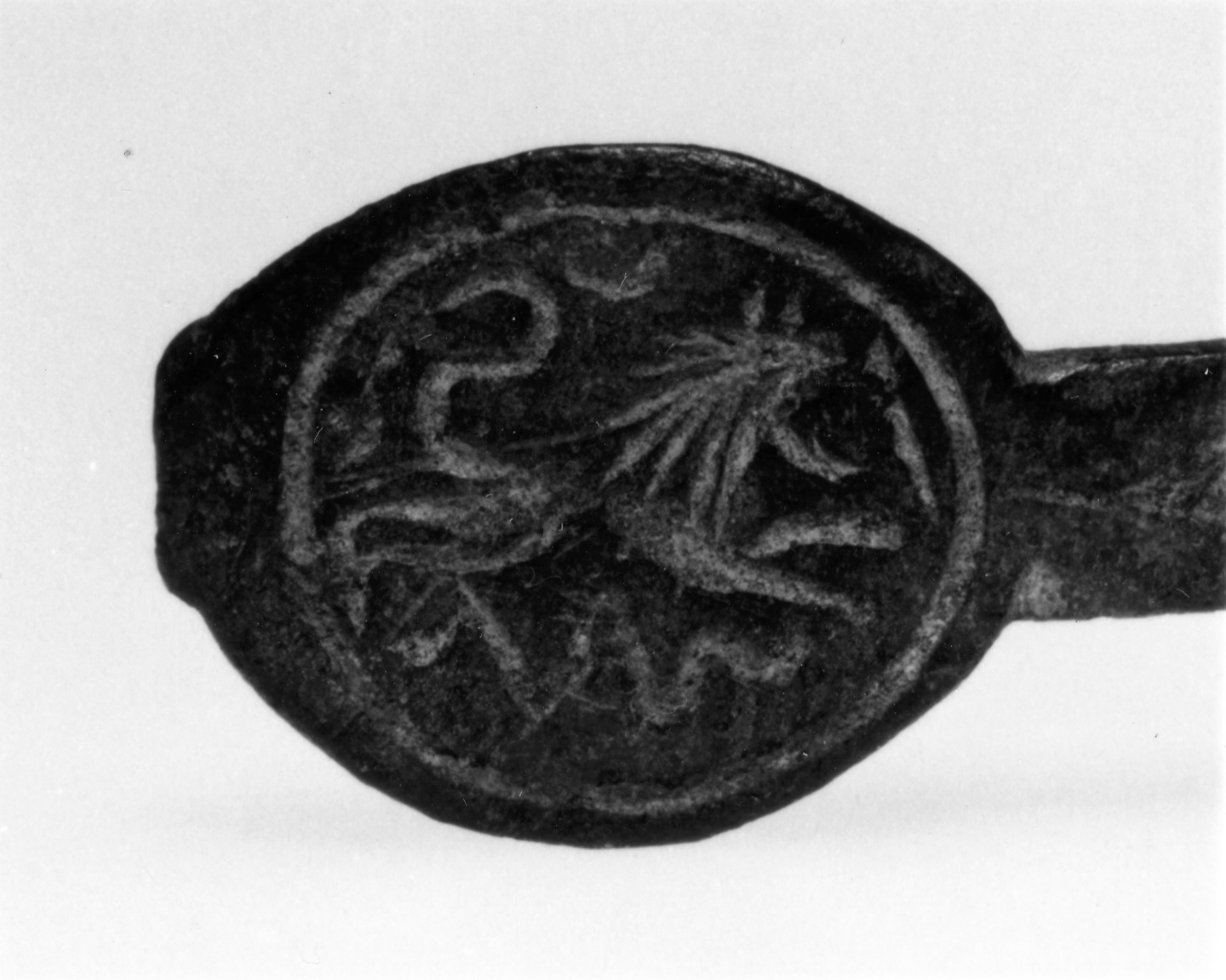Amuletic Armband with Holy Rider, Saints, and Magical Symbols
(Byzantium and Early Russia)
Originally made up of six inscribed medallions, this armband demonstrates the intermixing of Christian, Jewish, and pagan imagery on an object of magical, medicinal purpose. Judging by the inscriptions, most armbands (made in Byzantine Syria and Egypt) were used to treat abdominal disorders.
Inscription
Provenance
Provenance (from the French provenir, 'to come from/forth') is the chronology of the ownership, custody, or location of a historical object. Learn more about provenance at the Walters.
Sale, Frank Sternberg, Zurich, November 20, 1990; Walters Art Museum, 1990, by purchase.
Exhibitions
| 2011-2012 | Transitions to Christianity. Alexander S. Onassis Public Benefit Foundation (USA), New York. |
Measurements
fragment A: 11/16 x 3 3/16 x 1/16 in. (1.8 x 8 x 0.1 cm);
fragment B: 5/8 x 2 1/4 x 1/16 in. (1.7 x 5.7 x 0.1 cm);
fragment C: 11/16 x 2 1/4 x 1/16 in. (1.8 x 5.7 x 0.1 cm)
Credit Line
Museum purchase, 1990
Location in Museum
Accession Number
In libraries, galleries, museums, and archives, an accession number is a unique identifier assigned to each object in the collection.
In libraries, galleries, museums, and archives, an accession number is a unique identifier assigned to each object in the collection.
54.2657














